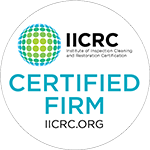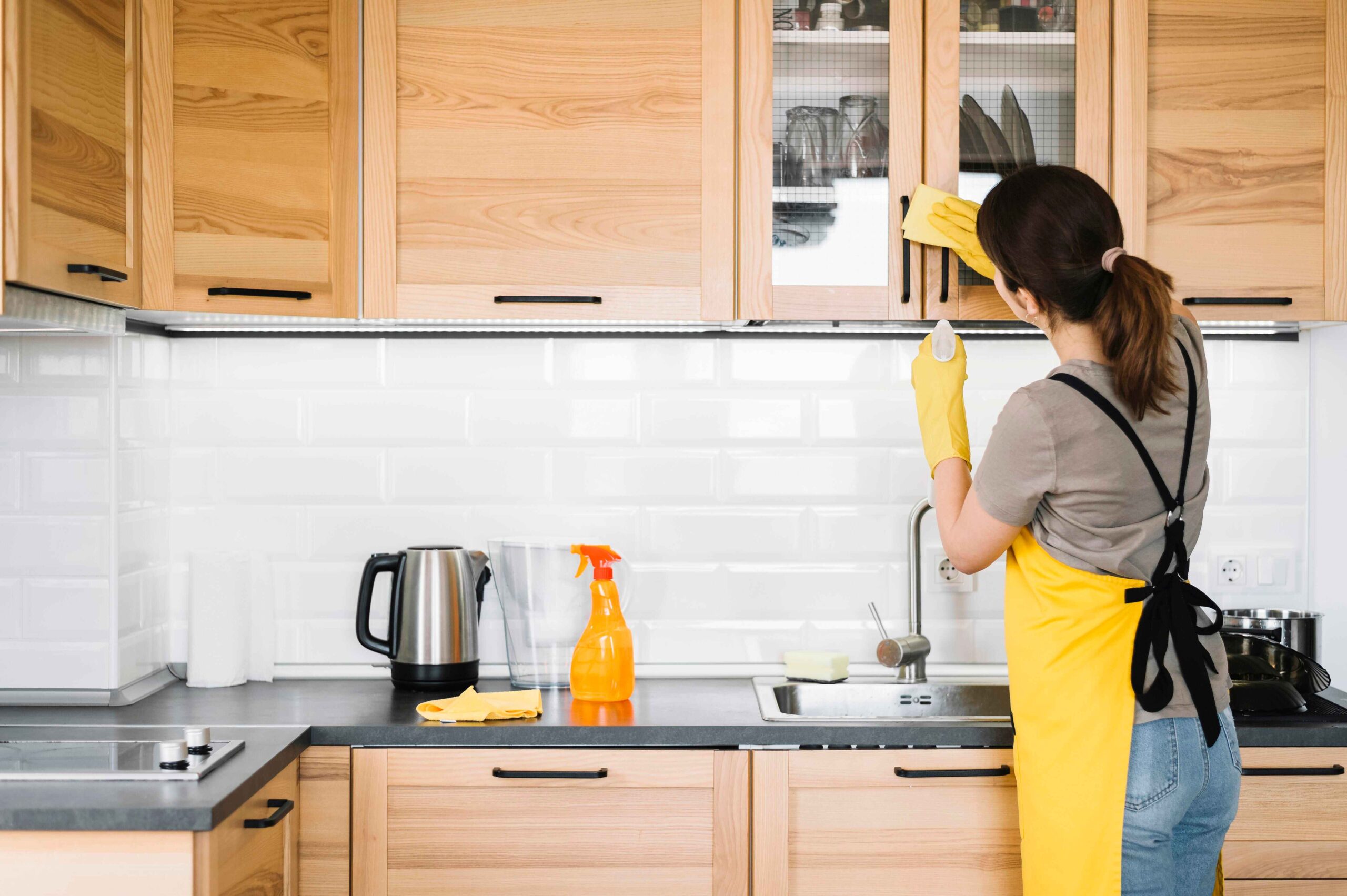Deep kitchen cleaning involves analyzing specific needs, gathering necessary supplies, tackling the stovetop and oven, and cleaning and organizing cabinets and pantry. Evaluate each area, pinpoint special-interest zones, and match cleaning products to surface materials. Equip yourself with cleaners, degreasers, cloths, sponges, brushes, and gloves. Remove stovetop components, soak, scrub, and use baking soda for stains. For the oven, clean the interior using commercial or DIY cleaners. Wipe down cabinets inside and out with a mild cleaner, paying attention to details. Additional tips from reliable house cleaners await to guarantee a spotless kitchen.
Assessing the Kitchen’s Cleaning Needs
When deep cleaning your kitchen, it is vital to evaluate the specific cleaning needs of each area to secure a thorough and efficient cleaning routine. Begin by examining the different zones in your kitchen, such as the countertops, cabinets, appliances, floors, and any other surfaces. Identify areas that require special attention, such as grease buildup near the stove or grime on cabinet handles.
Consider the materials of the surfaces you are cleaning to select the appropriate cleaning products. For instance, granite countertops may require a cleaner different from stainless steel appliances. Check for any stubborn stains or dirt requiring pre-treatment or specific cleaning techniques.
Inspect the condition of your kitchen tools and equipment. Ensure that sponges, brushes, and cloths are clean and in good condition to prevent spreading germs or dirt. Moreover, check the expiration dates of cleaning products to ensure their effectiveness. By thoroughly evaluating your kitchen’s cleaning needs, you can develop a personalized cleaning plan that leads to a sparkling and hygienic environment.
Gathering the Necessary Cleaning Supplies
To effectively deep clean your kitchen, gathering the necessary cleaning supplies before starting the cleaning process is essential. Having the right tools and products on hand will ensure that you can address each kitchen area efficiently and effectively. Here is a list of essential cleaning supplies you may need:
- Multi-Surface Cleaner: A versatile cleaner used on various surfaces like countertops, cabinets, and appliances.
- Degreaser: This product is Ideal for removing tough grease and grime from stovetops, range hoods, and other greasy surfaces.
- Microfiber Cloths: These are great for wiping down surfaces and effectively capturing dirt and bacteria.
- Scrubbing Sponges or Brushes: Useful for scrubbing stubborn stains on sinks, countertops, and tiles.
- Gloves: Protect your hands from harsh chemicals and hot water during cleaning.
- Trash Bags: Use these to dispose of expired food, empty containers, or other kitchen waste.
Tackling the Stovetop and Oven
Having gathered the necessary cleaning supplies, the next step in deep cleaning the kitchen involves tackling the stovetop and oven. Start by removing grates, knobs, and burner covers from the stovetop. Soak these components in warm, soapy water while you address the stovetop surface. Wipe the stovetop with warm water, dish soap, or a specialized cleaner. For stubborn stains, use a baking soda and water paste, then scrub gently with a non-abrasive sponge.
Moving on to the oven, remove oven racks and set them aside to soak in warm, soapy water. Spray the oven’s interior with a commercial oven cleaner or a DIY water, vinegar, and baking soda solution. Let it sit according to the cleaner’s instructions to break down grease and grime. Afterwards, scrub the interior with a sponge or cloth, focusing on tough spots. Once cleaned, rinse the oven racks, dry all components thoroughly, and reassemble the stovetop and oven.
Cleaning and Organizing Cabinets and Pantry
After clearing out the contents, begin by wiping down the cabinets and pantry’s interior and exterior surfaces with a mild cleaner and a damp cloth to remove dust and grease buildup. Pay close attention to shelves, corners, and handles. For wooden cabinets, use wood-safe products to prevent damage. Once clean, consider adding shelf liners to protect surfaces and make cleaning more accessible.
Next, declutter the items before organizing. Discard expired food, donate unused items, and group similar items together for easy access. Utilize storage containers or baskets to contain smaller items and keep the space tidy. Adjust shelf heights if needed to accommodate different-sized items effectively.
Implement a labelling system to identify items quickly. This can be especially useful for canned goods, spices, or baking ingredients. Consider installing additional shelving, hooks, or racks to optimize space usage. Regularly revisit and declutter the cabinets and pantry to maintain organization and cleanliness.
Other Cleaning Tips:







